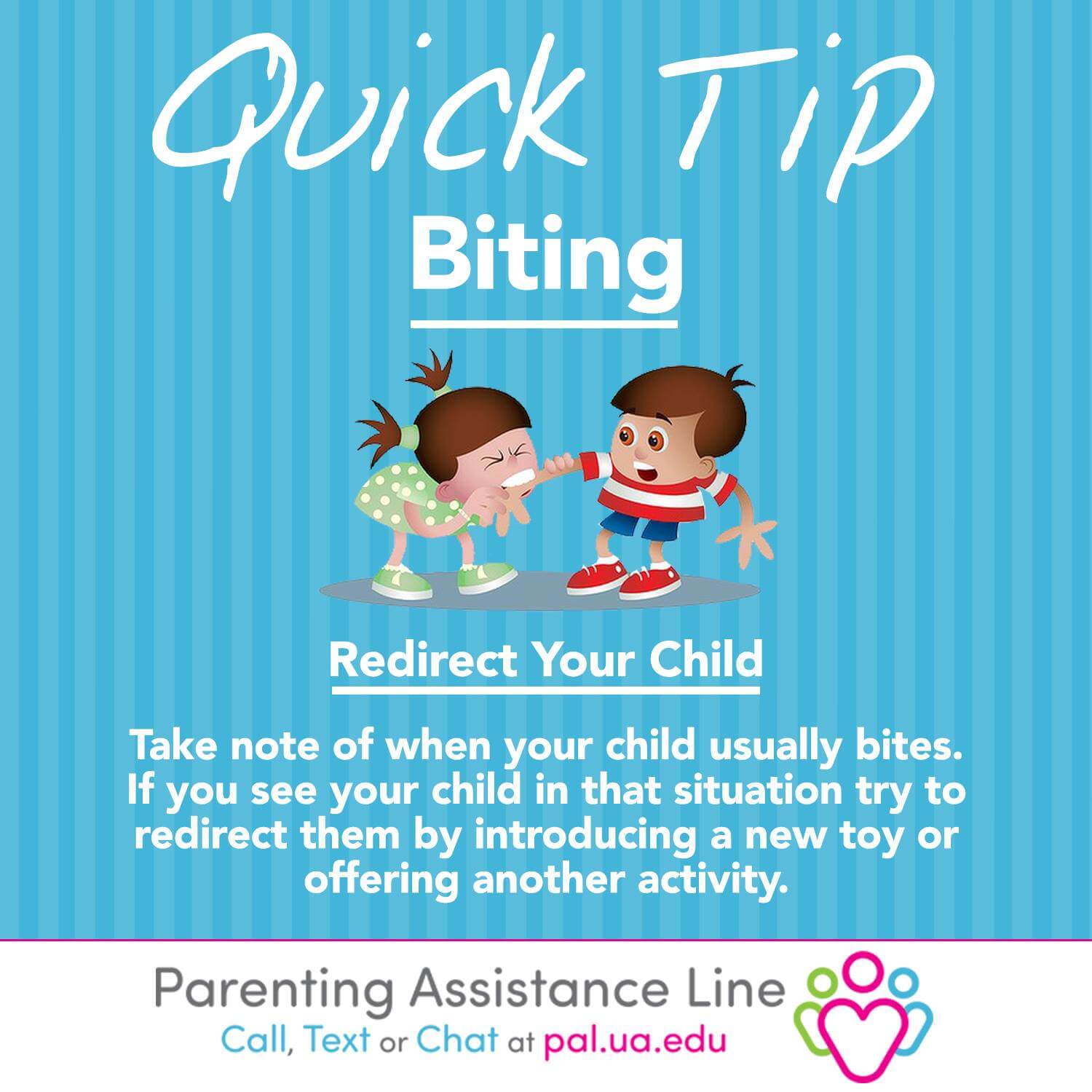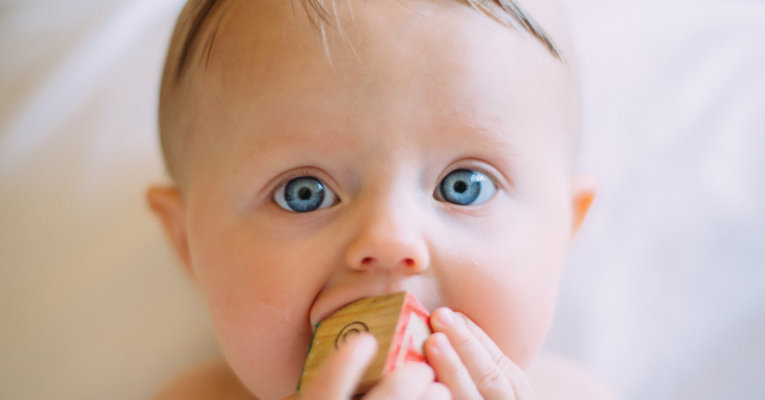Biting can be a common but unacceptable behavior. Children who bite are usually under stress. The stress could be as simple as not wanting to share, or something larger such as a change in the family or a new sibling.
If your child is biting other children or adults, here are some suggestions to help your child stop biting:
- When the bite occurs, get on your child’s eye level, make eye contact and tell your child firmly “No! Biting hurts. Do not bite.”
- Take note of when your child usually bites. If you see your child in that situation try to redirect him by introducing a new toy or offering another activity.
- If your child feels the urge to bite, you can give her something safe to bite such as a squishy toy or a washcloth. Tell your child to bite this object not people.
- Acknowledge your child’s feelings when he feels the urge to bite. Children need to know it is OK to be angry or frustrated, but it is NOT OK to bite.
Never bite a child back. It does not build the respect and warmth needed in the parent-child relationship. Show your child how to be gentle by setting a gentle example.
If your child is the one who has been bitten…
Give more attention to the injured child than the child who bit. This shows the child who bit that his biting causes pain. Modeling empathy and gentle touch could help the biting child change his behavior.
First Aid for Bites:
- Calm your child.
- Wash your hands with antibacterial soap and water.
- Clean the bite wound with antibacterial soap and water, then apply antibiotic ointment and a bandage.
- If the bite is bleeding, apply pressure with a clean, dry cloth or piece of first-aid gauze.
- Call your pediatrician for further help if needed.
If you are concerned about your child contracting a disease from another child through a bite, rest assured that while it is possible, it is also unlikely that your child can contract a disease such as HIV or Hepatitis B from an infected child’s bite.







